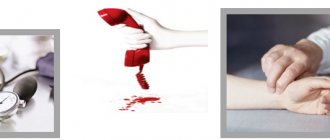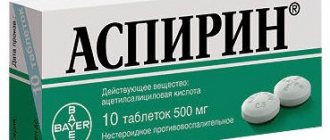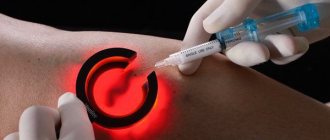- Why does pressure change when body position changes?
- Signs of orthostatic hypotension
- Tachycardia due to orthostatic hypotension
- When does orthostatic hypotension occur?
- Diagnostics
- Dysregulation of pressure in autonomic dysfunction
- Signs of autonomic dysfunction
- Treatment of the disease
- Medications
Orthostatic hypotension is also called postural hypotension.
The name "orthostatic collapse" is also used. This condition is characterized by a drop in blood pressure (BP) when a person assumes an upright position. This diagnosis is established if systolic pressure drops by 20 mmHg or more, and diastolic pressure by 10 mmHg or more, and this condition persists for three or more minutes. Elderly people, patients with neurological diseases, and people who have been on bed rest for a long time are most susceptible to pathology. According to statistics, 20% of older people, including those with high blood pressure, are diagnosed with orthostatic hypotension.
You should be aware that postural hypotension is not classified as a separate disease. This is a pathological condition that indicates a circulatory disorder. This phenomenon occurs against the background of various diseases and can occur periodically or be permanent. If there are signs of postural hypotension, it is necessary to identify its cause and eliminate it. This condition negatively affects the functioning of the heart and contributes to the development of cardiovascular diseases.
Why does pressure change when body position changes?
When a person stands up abruptly, a large amount of blood enters the vessels of the lower extremities. Its volume can reach one liter. In this case, venous return decreases and cardiac output decreases, which causes hypotension. This is a normal physiological process that occurs even in healthy people.
The sympathetic nervous system is responsible for normalizing blood pressure when changing body position. A person’s pulse reflexively quickens and vascular tone increases. Thanks to this, the pressure immediately returns to normal. In healthy people, when taking an upright position, the pathological signs characteristic of hypotension do not appear or go almost unnoticed.
If a person remains in a lying position for a long time, due to natural compensation mechanisms, the production of vasopressin increases. Its effect helps increase the volume of circulating blood.
Arterial hypotension - what is it?
Due to the multifactorial development, hypotension (the second name for hypotension) is studied in various clinical disciplines - neurology, therapy, cardiology, endocrinology, etc.
Classification of the disease
According to the medical classification, arterial hypotension comes in different types:
- Physiological: - variant of the individual norm (hereditary nature); - adaptive compensatory (observed in people living in the tropics, subtropics, mountains); - increased training (in professional athletes).
- Pathological primary. Independent disease. Includes: - idiopathic (postural) orthostatic hypotension (pressure decreases sharply when changing body position (from a sitting/lying position to a standing position); - neurocirculatory hypotension with an unstable reversible course; - neurocirculatory hypotension with persistent manifestations (hypotonic disease).
- Secondary. It can be: - acute (results from shock, collapse); — chronic (accompanies the underlying disease (anemia, pathologies of the endocrine and cardiovascular systems, intoxication of the body, etc.).
There is another classification of arterial hypotension. According to it, the disease can occur in four forms:
- Acute (pressure drops sharply, may accompany severe arrhythmia, myocardial infarction, blood loss).
- Chronic (is a consequence of vegetative-vascular dystonia, lasts for a long time).
- Primary (the disease that caused the disease cannot be determined).
- Symptomatic (hypotension is a symptom of the underlying disease).
In medicine there is also the concept of artificial (controlled) hypotension. This is a targeted effect on the circulatory system, accompanied by a decrease in blood pressure. The method is used during operations to reduce bleeding and facilitate manipulation of blood vessels. Controlled hypotension is also used in intensive care practice to treat pulmonary edema and normalize blood pressure.
Signs of orthostatic hypotension
Pathology manifests itself:
- severe weakness;
- dizziness;
- impaired coordination of movements, loss of balance;
- short-term visual impairment.
If symptoms are severe, the patient may fall due to loss of balance. In some people, convulsions are added to these symptoms. As a rule, the manifestations of pressure fluctuations are more pronounced after a heavy meal or physical activity.
The duration of symptoms depends on the severity of the condition. In some patients, signs of blood pressure dysregulation last for several minutes; for others, everything goes away in seconds. In severe cases, the patient has to take a horizontal position, as standing he feels bad.
Causes of neurogenic orthostatic hypotension
Causes of neurogenic orthostatic hypotension include disease in both the central and peripheral autonomic nervous systems. Orthostatic hypotension in such disorders is often accompanied by autonomic dysfunction of varying degrees of importance in other organ systems (including the cervix, intestines and organs).
The primary degenerative disorders of the autonomic nervous system are multiple system atrophy (Shay-Drager syndrome), Parkinson's disease, dementia with Lewy bodies and isolated autonomic failure. These disorders can often lead to a complex group of synucleinopathies, the fragments of which reveal alpha-synuclein - a small protein that is deposited mainly in the cytoplasm of neurons, as well as in glia. The characteristic signs of the names of the disorders are shown in Table 1.
Peripheral autonomic dysfunction may also accompany peripheral neuropathies with loss of fibres, which is avoided in diabetes, amyloidosis, immune nephropathies, spasmodic sensory, autonomic and inflammatory neuropathies (div. Table 2). More often, orthostatic hypotension is associated with peripheral neuropathies that occur due to vitamin B12 deficiency, neurotoxins, infections (for example, SAIDs) and porphyria.
Tachycardia due to orthostatic hypotension
Patients may experience a significant increase in heart rate. This phenomenon is called postural tachycardia. The heart rate increases to 120 or more beats per minute. If a person’s pulse accelerates by more than 30 beats when changing body position, then this is also postural tachycardia.
In some patients, increased heart rate is accompanied by dizziness and weakness, but the pressure is reduced slightly or remains normal. Experts still have not figured out what causes this condition.
Why is arterial hypotension dangerous?
Arterial hypotension not only negatively affects the patient’s well-being and deprives him of the opportunity to lead a normal lifestyle and work, but also leads to more serious problems. Due to low pressure, less blood flows to the muscles and heart. Insufficient blood circulation and oxygen starvation of brain tissue develops.
If the pressure drops to a critical level, there is a high risk of cardiogenic shock. Then the patient’s pulse weakens, he loses consciousness, and may even begin to choke. It is important to know that cerebral stroke is also often a consequence of arterial hypertension, as well as hypotension.
If a person suffers from hypotension for a long time, structural changes occur in the blood vessels. As a result, hypertension is diagnosed. Former hypotensive patients tolerate pressure surges much more difficultly than ordinary hypertensive patients. This is why symptoms of low blood pressure cannot be ignored. At the first signs, you should contact a cardiologist.
During pregnancy, hypotension can lead to oxygen starvation of the fetus, which is why it begins to lag behind in development.
When does orthostatic hypotension occur?
The cause of the pathology is considered in the context of the patient’s age, his state of health, and past illnesses. Acute postural hypotension can be caused by:
- hypovolemia - a condition in which the body lacks sodium and the water-electrolyte balance is disturbed;
- taking medications;
- long periods of lying down;
- decreased adrenal function.
If the pathology is chronic, the causes may be age-related changes and various disorders in the functioning of the autonomic nervous system. If the patient regularly takes medications, he may experience side effects, which are manifested by a decrease in blood pressure.
Experts included postprandial orthostatic hypotension into a separate category. It appears after the patient eats a large amount of foods high in carbohydrates. The pancreas produces a lot of insulin, and blood accumulates in the gastrointestinal tract.
How to treat?
If you witness an attack of orthostatic hypotension, you must provide first aid to the victim, which consists of the following:
- If a person has lost consciousness, sprinkle him with cold water or use ammonia (only very carefully, for example, moistening a napkin with a few drops of the solution, so as not to cause a burn to the nasal mucosa).
- When the patient returns to normal, give him warm tea with sugar.
- If consciousness does not return within one or two minutes, call an ambulance.
The following medications are used to treat manifestations of orthostatic hypotension:
- psychostimulants (caffeine preparations);
- alpha-adrenergic agonist (midodrine, etilephrine) – a hypertensive agent with a vasoconstrictor effect;
- mineralocorticoid (hydrocortisone) – helps increase circulating blood volume and constricts peripheral blood vessels.
- beta blockers (metoprolol, propranolol) – potentiate the effect of adrenal hormones;
- plant adaptogens (ginseng, eleutherococcus, lemongrass) – have a general tonic and strengthening effect on the body, increase blood pressure.
Specific therapy is also used for the specific disease that caused this syndrome.
Seizure prevention
An important part of the fight against this syndrome is prevention, which greatly reduces the frequency and severity of symptoms.
Doctors advise following the following recommendations:
- Avoid sudden changes in body position. When you wake up in the morning, lie down for a while and then slowly get up.
- If bed rest is indicated for you, take measures to combat physical inactivity. Do exercises right in bed, change your position periodically.
- If you have varicose veins, it is recommended to use compression bandages on the legs or special underwear;
- Maintain normal water balance - drink at least 1.5-2 liters of fluid per day. It is also necessary to consume enough salt.
- Walk more in the fresh air, engage in physical exercise (especially aimed at training the muscles of the legs and abdominals).
- Try not to overeat - this also provokes orthostatic collapse.
Diagnostics
The main condition for eliminating pathology is determining its exact cause. The patient is prescribed:
- electrocardiogram;
- blood test for electrolytes, glucose levels, creatinine;
- analysis of thyroid hormones;
- examination by a neurologist.
When a patient takes medications, he is offered temporary withdrawal, if possible, or a reduction in the dosage of the drug. If the symptoms of orthostatic hypotension disappear, one can judge the medicinal cause of the pathology.
Lessons and recommendations
The decrease in systolic blood pressure is assumed to be 20 mm Hg. Art. the diastolic blood pressure is reduced by 10 mmHg. Art. at intervals up to 3 min. After getting up, confirm the diagnosis of orthostatic hypotension. Anamnesis, physical examination and laboratory investigations focus on excluding non-neurological causes (for example, hemorrhage, anemia, cardiovascular and endocrine disorders) and identifying signs of primary autonomic degenerative diseases. their impairment and autonomic peripheral neuropathies. With a more precise diagnosis, there is a need for additional restraints, assessment of autonomic functions and neuroimaging.
In a typical clinical presentation, the absence of an obvious cause of symptoms and the normal results of neurological stimulation allow one to think about the diagnosis of isolated autonomic failure. At the same time, since orthostatic hypotension may be the first manifestation of multisystem atrophy or autonomic neuropathy, care for diseases is no longer principled.
Reversible causes of orthostatic hypotension (sedation during antihypertensive therapy) should also be taken into account. Patients should be counseled on non-pharmacological strategies for symptom management if symptoms continue to subside, including low doses of fludrocortisone (0.05–0.1 mg per dose). If there is an effect, an α-adrenergic agonist is added before treatment (for example, midodrine with an initial dose of 2.5 mg 2-3 times a day, gradually increasing to 10 mg 3 times a day), which is not taken at intervals of 4 years before Walking before bed . If other agents are required. Ailments can be managed on an AT basis, monitored regularly and identified all the symptoms that appear when placed in a supine or vertical position or after sitting.
Prepared by Yuriy Matvienko
Dysregulation of pressure in autonomic dysfunction
A common cause of postural hypotension is disturbances in the functioning of the autonomic nervous system. It is responsible for regulating blood pressure, heart rate, maintaining body temperature and electrolyte balance, and the processes of bowel and bladder emptying.
To determine pathological conditions in the functioning of the autonomic nervous system, a tilt test is used. This examination is carried out using special equipment, thanks to which it is possible to simulate the conditions of maximum venous outflow. The technique is informative and consists of several stages:
- After a night's sleep, the patient is placed on a table with a lifting mechanism. This device is called an orthostatic table. It is equipped with a body strap.
- Next, the patient is given an intravenous catheter to supply drugs that can provoke gasovagal symptoms: nausea, decreased blood pressure, dizziness, loss of consciousness. The combination of such signs is called neurocardiogenic syncope.
- First, the subject spends a quarter of an hour in a horizontal position, then the table is raised to a vertical position. Within 45 minutes, the doctor observes changes in blood pressure, pulse, and other indicators.
The tilt test is most often performed on young people. Older patients are referred for such examination if other types of diagnostics are uninformative and there are no contraindications. These include severe cardiovascular diseases in the acute stage.
Cardiac monitors are also used to assess the functions of the autonomic nervous system.
Diagnostic assessment
In patients who suffer from orthostatic hypotension, it is necessary to exclude dehydration and gastric hemorrhage, and also consider the possibility of other causes. These include drugs (for example, antihypertensive agents or antidepressants), decreased cardiac output (for example, constrictive pericarditis, cardiomyopathy and aortic valve stenosis), endocrine disorders (for example, insufficiency of the pancreas and pheochromocytomas) and supra-global vasodilation (for example, with systemic mastocytosis and carcinoid syndrome). Taking an anamnesis may also reveal other symptoms (gastroenterological and urological), which may lead to thoughts about central or peripheral autonomic dysfunction, as well as ear disorders, sorema, parkinsonism, pyramidal tension. cerebrovascular ataxia and peripheral neuropathies (Tables 1 and 2).
AT must be extinguished when the patient is lying down and 3 weeks after standing up. For obvious reasons for the disorder, screening investigations include a full blood test, electrolytes, glucose, vitamin B12, cortisol levels, and immunoelectrophoresis.
Assessment of autonomic dysfunction should be carried out in specialized centers, which includes functional assessment of the parasympathetic (heart rate variability during deep inspiration and Valsalvi maneuver), sympathetic cholinergic (thermoregulatory response this and a comprehensive assessment of the sudomotor axonal reflex) and the sympathetic adrenergic system (AT reaction to the Valsalvi maneuver and test with steal the table). These studies are particularly useful in the differential diagnosis of orthostatic hypotension due to autonomic failure and neural syncope.
Primary autonomic degenerative disorders can be differentiated according to clinical criteria (Tables 1 and 2), although in case of diagnostic difficulties it is necessary to proceed to neuroimaging.
Characteristic changes in MRI and single-photon emis- sive computed tomography (SPECT) from radioactively labeled sympathetic amine 123I-methiodobenzylguanidine are given in Table 1. Table 1. Primary vegetative effects generative disorders that cause orthostatic hypotension (synucleinopathies)
| Sickness | Autonomic dysfunction | Motor symptoms | Other clinical manifestations | Typical pathomorphological signs | Diagnostic tests |
| Multiple system atrophy due to autonomic failure (Shy-Drager syndrome) | Autonomic dysfunction occurs in the early stages of illness and may be a single syndrome; average survival period 7–9 years | Parkinsonism* (80% of patients), cerebellar disorders (20% of patients), symptoms of cervicospinal cord disease | Dysarthria, stridor, contractures and dystonia (zocrema, anterocolis), sleep disorder, sleep disorders, dementia | α-synuclein precipitates in glia (glial cytoplasmic inclusions) and certain neurons of the central nervous system | MRI of the brain can reveal song changes, squeaking, atrophy and hypointensity of the scalp in the visibly pale veins in T2 mode, gap-like changes in the signal at the posterocomoral edge of the scalp, atrophy and changes in the signal from the pons, middle cerebellar peduncles and cerebellum |
| Parkinson's disease | Autonomic dysfunction occurs in the later stages of the disease and is often provoked by antiparkinsonian drugs; It’s even rare that you don’t care as much as you do with multiple system atrophy | Parkinsonism* | Disorder of sleep, ties with the Swedish phase; dementia in advanced stages | α-synucleic acid precipitates in Lewy bodies in the cytoplasm of CNS neurons | EFFECT of the heart with the sympathomimetic amine 123I-MIBG immediately disrupts the metabolism of the remaining substance, zocrem, in case of autonomic failure; PET with 18F supplement confirms similar changes |
| Dementia with Lewy Taurus | Autonomic dysfunction occurs in the early stages of illness | Parkinsonism* | Progressive dementia is transmitted and accompanied by parkinsonism, cognitive impairment and cognitive deficits, mental hallucinations, sleep disorders, and related to the fluid phase. | α-synuclein precipitates in Lewy bodies in the cytoplasm of neurons of the central nervous system, especially the neocortex and limbic system | EFFECT heart with sympathomimetic amine 123I-MIBG immediately destroys the elimination of waste, zocrem, in case of vegetative failure |
| Isolated autonomic failure | Gradually progressive autonomic dysfunction, which responds well to treatment; The quality of life and the prognosis are much more similar to other forms of primary autonomic degenerative disorders | Motor symptoms are daily, rarely progressing to Parkinson's disease or dementia with Lewy bodies | Weekdays | α-synuclein precipitates are important in Lewy bodies of pre- and postganglionic peripheral autonomic neurons | OPECH heart with the sympathomimetic amine 123I-MIBG is proven to destroy the elimination of waste, zocrem, in case of vegetative failure |
| 123I-MIBG - 123I-metaiodobenzylguanidine; 18F-dopa - [18F]fluoro-L-dopa; MRI - magnetic resonance imaging; SPECT—single-photon emitter computer tomography; PET - positron emics tomography; CNS - central nervous system * Symptoms of parkinsonism include resting tremor, bradykinesia, muscle rigidity and postural instability. | |||||
Table 2. Peripheral autonomic disorders that are often associated with orthostatic hypotension
| Rozlad | Associated symptoms | Comment | Diagnostic tests |
| Diabetes | Please note that it is not always associated with generalized polyneuropathy; orthostatic hypotension may occur in the early stages; Often autonomic symptoms include gastroparesis, diarrhea, constipation, congestion and erectile dysfunction | The most widespread cause of autonomic dysfunction in advanced countries | Blood glucose and tolerance test before it |
| Spasmodic amyloidosis (familial amyloid polyneuropathy) | It is associated with generalized polyneuropathy, the clinical manifestations of which are mainly impaired temperature sensitivity; Other associated conditions include carpal tunnel syndrome (often with early onset), cardiomyopathy and cardiac conduction disorders, disorders of the corpus mucosa and increased internal ocular pressure; If jagged teeth are revealed; Diarrhea and changes in body weight are often expected | Develops in the 3rd–5th decade of life, is characterized by the accumulation of non-organic β-fibrillary proteins in the epi-, peritoneal, perineural tissues and vessels of the nerve tissue; The most widespread amyloid precursor is mutant transthyretin; sporadic occurrences occur frequently; mutations of genes that encode apolipoprotein A1, fibrinogen Aα, lysozyme and gelsolin, cause amyloidosis | Evaluation of fat aspirates from rectal biopsies is clear regarding the presence of amyloid accumulation; more genetic testing |
| Primary amyloidosis (association with lung immunoglobulins) | It is associated with generalized polyneuropathy, the clinical manifestations of which are mainly impaired temperature sensitivity; Other associated conditions include carpal tunnel syndrome (often early onset), cardiac problems, macroglossia, periorbital purpura, often bruising, organomegaly, low body weight, nephrotic syndrome and pimples. | Appears in the 6th–7th decade of life; is caused by the creation of amyloidogenic monoclonal protein-immunoglobulin (light lancin M-protein and their fragments) by monoclonal cells of the cerebrospinal fluid; There is an apparent accumulation of non-organic β-fibrillary proteins in epi-, peritoneal, perineural tissues and vessels of nerve tissue | Evaluation of fat aspirates from rectal biopsies is clear for the presence of amyloid accumulation, immunoelectrophoresis of blood and section |
| Spadkova motor-vegetative neuropathy (familial dysautonomia) | Insensitivity to pain and temperature due to preserved visceral sensitivity, absence of tears, decreased corneal and tendon reflexes and absence of fungal papillae of the tongue | Autosomal recessive disorder, which causes headaches in children of Ashkenazi Jews | Detected splicing mutations in the gene for protein associated with IKB kinase (IKBKAP), which is evident in 99.5% of patients |
| Idiopathic immune autonomic neuropathy | Decreased mobility of the scutulo-intestinal canal, obstruction of the secretions, xerostomia and xerophthalmia | May respond to immunomodulatory therapy | Identification of antibodies to noncotinergic acetylcholine ganglion receptors, which are evident in certain diseases |
| Sjögren's syndrome | Dry syndrome, signs of dysautonomia, abnormal orthostatic hypotension | Autonomic symptoms may occur with normal serological test results | Identification of antibodies up to anti-Ro (SSA) and anti-La (SSB) |
| Paraneoplastic autonomic neuropathy | Vegetative symptoms of oncogenic behavior may be the first manifestation of cancer | Most often it appears in patients with granulomatous cell carcinoma; also watch out for oncological processes of the scilico-intestinal canal, prostate, thoracic gland, seech fur, nir, subglandular gland, testicles and ovaries | Detection of antibodies up to anti-Hu (antineuronal nuclear antibodies type 1 [ANNA-1]), which are the most widespread; antibodies to Purkinje cell type 2 (PCA-2) and colapsin reaction mediator protein 5 (CRMP-5) |
Signs of autonomic dysfunction
With orthostatic hypotension against the background of autonomic disorders, patients note other signs of pathology. These include:
- visual impairment;
- urinary incontinence or difficulty urinating;
- constipation;
- poor heat tolerance;
- impaired coordination of movement, which causes difficulty walking;
- fatigue;
- trembling of limbs;
- decreased muscle tone;
- erectile dysfunction in men.
Some patients experience darkening of the stool due to internal bleeding.
Autonomic dysfunction and the resulting orthostatic hypotension are a consequence of a number of serious diseases. These primarily include cardiac and neurological pathologies, Parkinson's disease, diabetes, cancer, and dysfunction of the adrenal glands. People who abuse alcohol experience problems with the functioning of the autonomic nervous system.
Does the presence of this condition affect the patient's overall prognosis?
It should be understood that orthostatic hypertension syndrome is not a separate disease, but usually develops against the background of one or another pathology and will always be an aggravating factor.
This condition can provoke the development of some dangerous complications. The most common are traumatic brain injuries due to falls. Another negative consequence may be encephalopathy, which occurs due to prolonged fainting, which can cause irreversible changes in the cerebral cortex, including dementia (dementia).
With proper treatment and implementation of preventive recommendations, the prognosis in most cases is favorable.
Treatment of the disease
To eliminate the drop in pressure when changing body position, you need to influence the disease that led to this condition. Treatment of pathology is divided into medicinal and non-medicinal.
The patient will have to reconsider his habits. First of all, it is necessary to normalize the drinking regime, provide moderate physical activity, and give up alcohol. Physical activity improves the condition of blood vessels and has a positive effect on blood circulation.
If the patient had to constantly remain in bed, it is undesirable to spend all the time lying down. You need to get up or just sit down periodically. For elderly patients, sleeping with the head of the bed elevated is recommended.
It is important to provide the body with the right amount of sodium, which increases the volume of fluid inside the vessels. To do this, you need to take sodium supplements or increase the amount of salt in your diet. This option has contraindications if the patient has a diseased heart or kidneys. Excess sodium in the diet leads to edema.
People whose orthostatic hypotension is caused by overindulging in carbohydrates or eating large meals should reconsider their diet. It is important to reduce the amount of foods high in carbohydrates and the amount of food in general. After eating, you need to get up smoothly and avoid sudden movements.
It is also recommended to wear elastic stockings, which increase venous return.
Diet for arterial hypotension
During the treatment of arterial hypotension, it is important to follow simple nutritional rules:
- The patient's daily diet should contain sufficient amounts of B vitamins, vitamin C and proteins. Vitamin B3 is especially important (egg yolk, carrots, yeast, liver, milk, green parts of plants, etc.).
- Eat 5-6 times a day in small portions.
- The amount of salt is not limited. If there are no diseases of the gastrointestinal tract, you can eat spicy foods.
- There are beans, nuts, meat, cereal grains, vegetables (especially potatoes).
- Drink coffee, tea, clean water without gas.
If you have hypotension, you should not go hungry or lack sleep. If you feel worse, you can eat candy and drink a glass of sweet tea.
LITERATURE
- 1. Assessment: clinical autonomic testing report of the Therapeutics and Technology Assessment Subcommittee of the American Academy of Neurology. Neurology 1996;46:873-880.
- 2. Bradley JG, Davis KA. Orthostatic hypotension. Am Fam Physician. 2003 Dec 15;68(12):2393-8.
- 3. Fouad-Tarazi FM, Okabe M, Goren H. Alpha sympathomimetic treatment of autonomic insufficiency with orthostatic hypotension. Am J Med 1995;99:604-610.
- 4. Freeman R. Treatment of orthostatic hypotension. Semin Neurol 2003;23:435-442.
- 5. Gibbons CH, Freeman R. Delayed orthostatic hypotension: a frequent cause of orthostatic intolerance. Neurology 2006;67:28-32.
- 6. Gupta D, Nair MD. Neurogenic orthostatic hypotension: chasing “the fall”. Postgrad Med J 2008 Jan;84(987):6-14.
- 7. Lahrmann H, Cortelli P, Hilz M, Mathias CJ, Struhal W, Tassinari M. EFNS guidelines on the diagnosis and management of orthostatic hypotension. Eur J Neurol 2006;13:930-936.
- 8. Low PA, Singer W. Management of neurogenic orthostatic hypotension: an update. Lancet Neurol. 2008 May;7(5):451-8.
- 9. Low PA, Vernino S, Suarez G. Autonomic dysfunction in peripheral nerve disease. Muscle Nerve 2003;27:646-661.
- 10. Maule S, Papotti G, Naso D, Magnino C, Testa E, Veglio F. Orthostatic hypotension: evaluation and treatment. Cardiovasc Hematol Disord Drug Targets. 2007 Mar;7(1):63-70.
- 11. Smit AA, Halliwill JR, Low PA, Wieling W. Pathophysiological basis of orthostatic hypotension in autonomic failure. J Physiol 1999;519:1-10.
- 12. Wieling W, Krediet CT, van Dijk N, Linzer M, Tschakovsky ME. Initial orthostatic hypotension: review of a forgotten condition. Clin Sci (Lond) 2007;112:157-165.
Causes and risk factors
Orthostatic hypotension can be a temporary condition or occur continuously over time (chronic). Some sources break down the causes of OH into drug-induced, non-neurogenic, primary and secondary neurogenic causes. In many cases, the underlying cause of orthostatic hypotension remains unknown or unconfirmed (idiopathic). Most idiopathic cases are thought to have a neurogenic cause.
- Medications.
Orthostatic hypotension can be caused by certain chemotherapy drugs, which can cause autonomic neuropathy. A common cause of OH is a decrease in circulating blood volume (hypovolemia) resulting from overuse of medications that increase urination and sodium loss (diuretics) or medications that dilate blood vessels (vasodilators) to treat high blood pressure (hypertension), heart failure, or chest pain (eg, calcium blockers and nitrates).
Commonly used vasodilators include levodopa for Parkinson's disease, nitroglycerin, and drugs taken to treat erectile dysfunction (sildenafil, tadalafil). Various drugs that affect the reflexes of the autonomic nervous system can also cause OH, such as some antipsychotic drugs (eg, phenothiazines) and antidepressants. Alcohol can also cause OH.
- Non-neurogenic causes.
Nonneurogenic causes may include hypovolemia, cardiac pump failure, and venous congestion.
- Hypovolemia is a decrease in circulating blood volume. Hypovolemia can be caused by several conditions, including dehydration, chronic bleeding, adrenal insufficiency, diabetes insipidus, diarrhea, and chronic vomiting.
- Heart pump failure is when the heart cannot pump blood enough to maintain blood flow to meet the body's needs, and may be associated with heart block, irregular heart rhythms (tachyarrhythmias), narrowing (stenosis) of the body's main artery (aorta), or heart attack myocardium.
- Venous pooling is a normal phenomenon in which gravity forces blood to drain down into the abdomen and legs when standing up. This results in decreased venous return to the heart. There are certain conditions that cause excessive venous congestion. Such conditions include getting up quickly after sitting or lying down for a long time, standing still for long periods of time, fever, heat exposure, or eating a heavy carbohydrate meal.
— Primary neurogenic causes.
Primary neurogenic causes refer to people with an underlying primary disorder that involves dysfunction of the autonomic nervous system, such as multiple system atrophy, Parkinson's disease, pure autonomic failure, dopamine beta-hydroxylase deficiency, Lewy body disease, familial dysautonomia, and diabetic autonomic neuropathy .
- Secondary neurogenic causes.
Secondary neurogenic causes may include spinal cord problems such as transverse myelitis or spinal cord tumors, and various peripheral neuropathies such as amyloidosis, Guillain-Barré syndrome, diabetes mellitus, and hereditary sensory and autonomic neuropathies. Individuals with OH due to primary or secondary neurogenic causes have neurogenic orthostatic hypotension (NOH).
Symptoms of orthostatic hypotension result from the body's inability to compensate for the normal drop in blood pressure that occurs when standing and sitting. When you stand up, gravity forces blood to flow into your legs and torso. Consequently, less blood returns to the heart and cardiac filling pressure decreases, resulting in decreased cardiac output. Within seconds, the body goes through a normal series of involuntary responses that compensate for this drop in blood pressure. These responses are controlled by the autonomic nervous system and include signaling the blood vessels to constrict so that more blood is pushed upward and signaling the heart to beat faster (increased heart rate) to pump more blood and maintain proper blood flow and pressure.
Any interruption of these involuntary processes can lead to OH. For example, the baroreflex is essential for maintaining proper blood pressure and does not function properly in people with NOH. The baroreflex refers to specialized cells called baroreceptors that cause the autonomic nervous system to increase levels of certain hormones called catecholamines, particularly norepinephrine (norepinephrine). Norepinephrine is a chemical messenger that nerves need to communicate to cause blood vessels to constrict and blood pressure to rise when standing up. This response is known as the baroreflex. When the baroreflex is impaired, the body cannot produce enough norepinephrine and cannot compensate for the drop in blood pressure that occurs when standing up, leading to symptoms of OH.
Not all cases of OH are a consequence of dysfunction of the autonomic nervous system. Conditions that cause hypovolemia, such as dehydration, cause OH because the loss of blood volume prevents the body from compensating for the low blood pressure that occurs when standing up. Conditions that affect the heart, such as heart pump failure, prevent the heart from pumping blood efficiently or quickly enough to compensate for the drop in blood pressure that occurs when standing.
Heat stroke and hyponatremia
Exertional heat stroke (EHS) is characterized by dysfunction of the central nervous system, which may manifest as collapse or syncope associated with an increase in core body temperature (>400 C) caused by exercise (13, 14). Exercise hyponatremia (EH) is a potentially life-threatening condition characterized by decreased serum sodium (<135 mmol/L) and changes in mental status. Athletes with HFN present with actual syncope, confusion, or disorientation, but with changes in serum sodium concentration (15).
HFN and PHFN may be a cause of collapse in endurance sports, but they are associated with abnormal vital signs/symptoms and should be suspected and ruled out before diagnosing HFN. This review focuses on CFN, its mechanism and treatment; therefore, TUFN and GFN will not be discussed further.
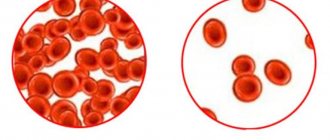
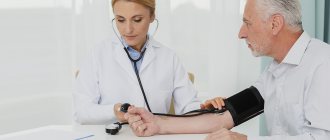

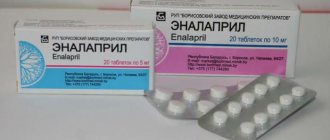
![Rice. 1. Functioning of the glymphatic system of the brain (according to [11]) 1. Glymphatic system functioning (according to [11])](https://expert35.ru/wp-content/uploads/ris-1-funkcionirovanie-glimfaticheskoj-sistemy-mozga-po-11-fig-1-330x140.jpg)


